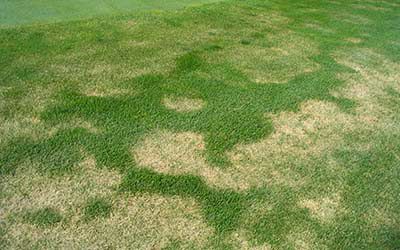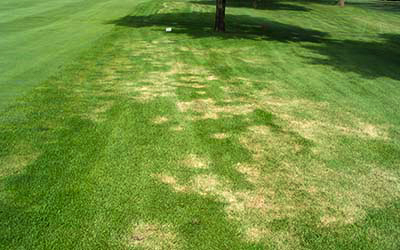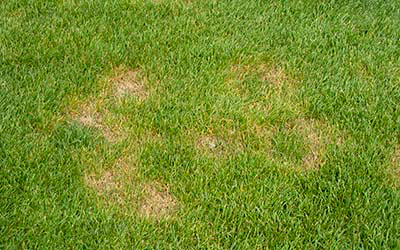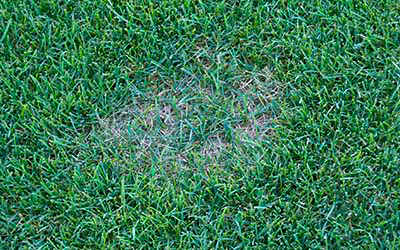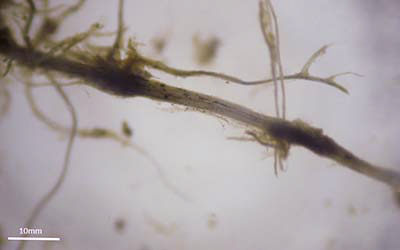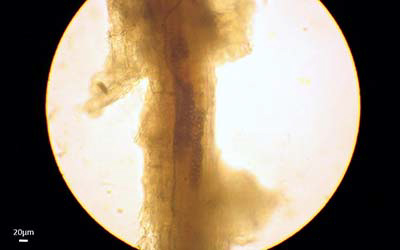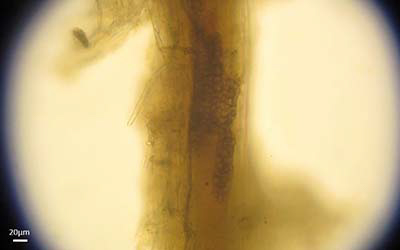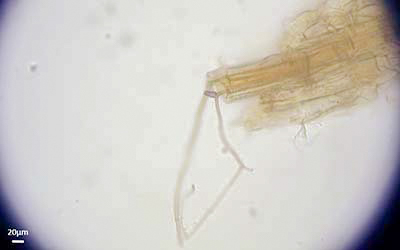Magnaporthe poae
![]()
![]()
![]()
![]()
![]()
![]()
Hosts
Kentucky bluegrass
Annual bluegrass
Creeping bentgrass
Disease description
Summer patch is caused by a soilborne pathogen that begins infecting turfgrass roots, crowns and rhizomes when mid-spring temperatures reach 65 degrees F. Symptoms occur later in the summer during high temperatures. Summer patch symptoms occur in patches or "frog-eye" rings ranging from 6 inches to 3 feet in diameter. Patches are straw-colored, sunken and wilted and eventually collapse to the soil surface. Affected plants are easily pulled from the turf and have dark black rotted rhizomes, roots and crowns. The disease is most severe on Kentucky bluegrass but recently has been found affecting creeping bentgrass putting greens in Missouri. Weeds may encroach into affected patches.
Control
Like other soilborne diseases, summer patch is difficult to control. Reduce soil pH to 5.5–6.0 through the use of ammonium-based fertilizers. Applications of manganese sulfate at 2 pounds per acre in the spring may suppress this disease. Avoid excessive nitrogen in spring, particularly with nitrate-based fertilizers, which can exacerbate disease. Reduce thatch buildup through aggressive aerification, vertical mowing and topdressing. When disease symptoms are present, minimize stress through frequent light irrigation and raising mowing heights. A light application of ammonium sulfate (0.2 pounds of nitrogen per 1,000 square feet) may encourage recovery, but be careful to rinse off leaves to minimize burn potential during high temperatures. Fungicides should be applied preventively when soil temperatures reach 65 degrees F and should be watered-in to the soil profile.
Images
